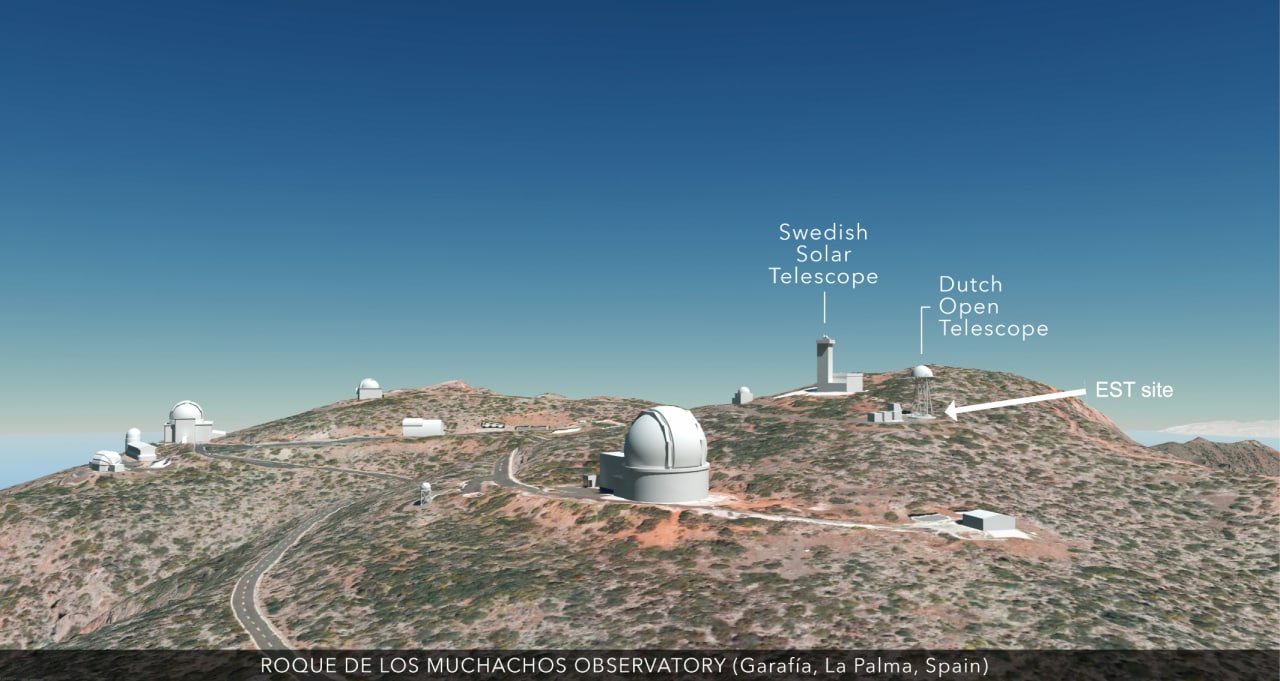Digital Engineering Center's associate professor Tatiana Podladchikova co-authored a publication about the European Solar Telescope (EST)
- an initiative to construct and operate the most innovative and technologically advanced ground-based large-aperture solar telescope to study the Sun in the coming decades in the visible and near-infrared bands. With a 4.2-metre primary mirror, it will be optimised for studies of the magnetic coupling of the solar atmosphere. This will require diagnostics of the thermal, dynamic and magnetic properties of the plasma over many scale heights, by using multi-wavelength imaging, spectroscopy and spectropolarimetry. EST will specialise in high spatial and temporal resolution, using several instruments simultaneously to efficiently produce 2D spectral information. EST will be located in the Canary Islands, a first-class site for astronomical observations.

EST site at Roque de Los Muchachos Observatory (La Palma, Spain). It was approved by the International Scientific Committee of the Canarian Observatories on May 21, 2021. The area is close to the DOT (see white arrow), next to the SST. Image credit: Gabriel Pérez (IAC) and originally published on the EST website on June 8, 2021.
The publication unites the efforts of 81 scientists from the international solar physics community and summarises fundamental science questions that can be addressed with the telescope, together with a complete description of its major subsystems. Skoltech participation is supported by the Solarnet project within the European Union’s Science and Innovation Horizon 2020 program.
The full text of the article is available at.
